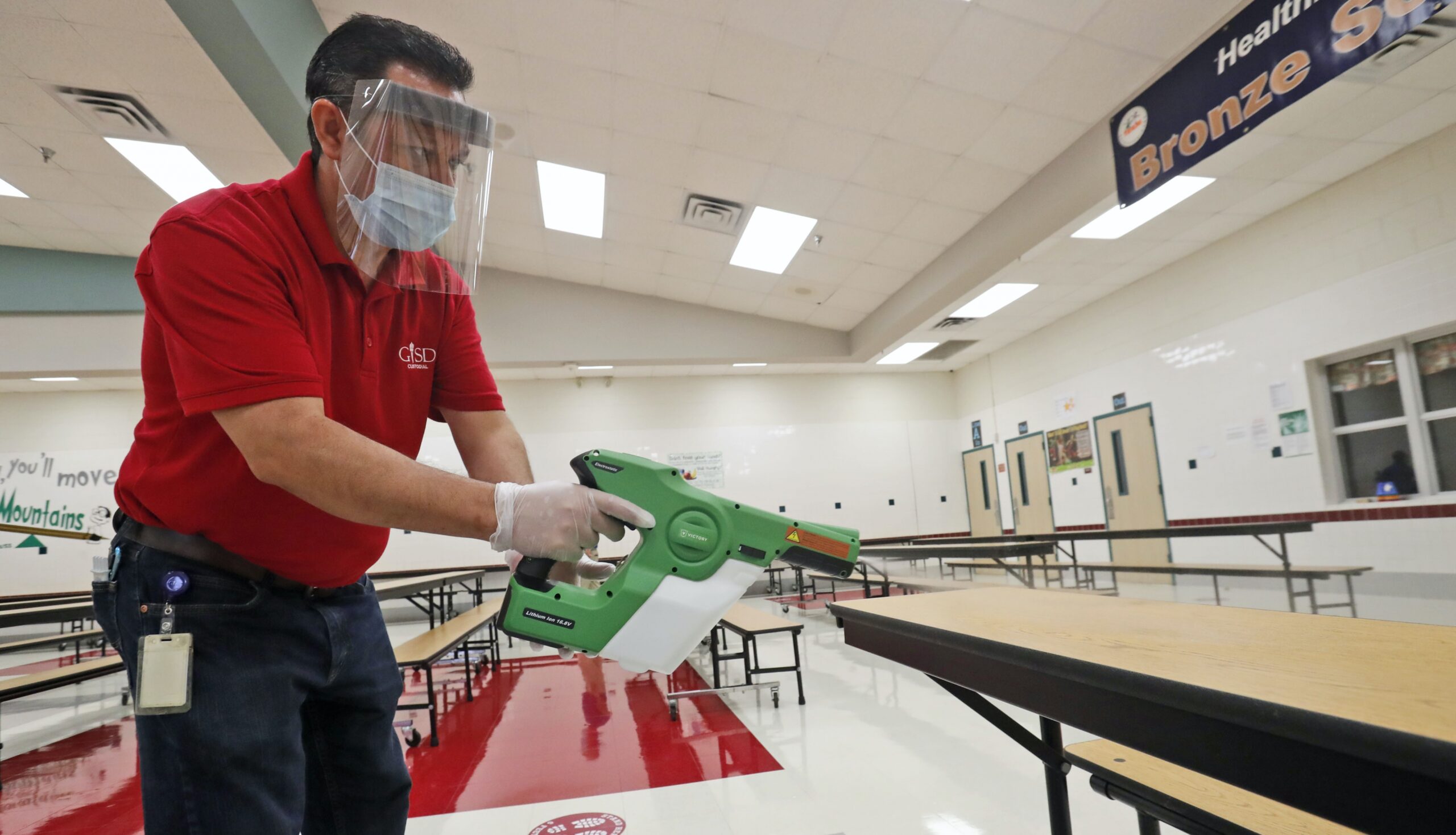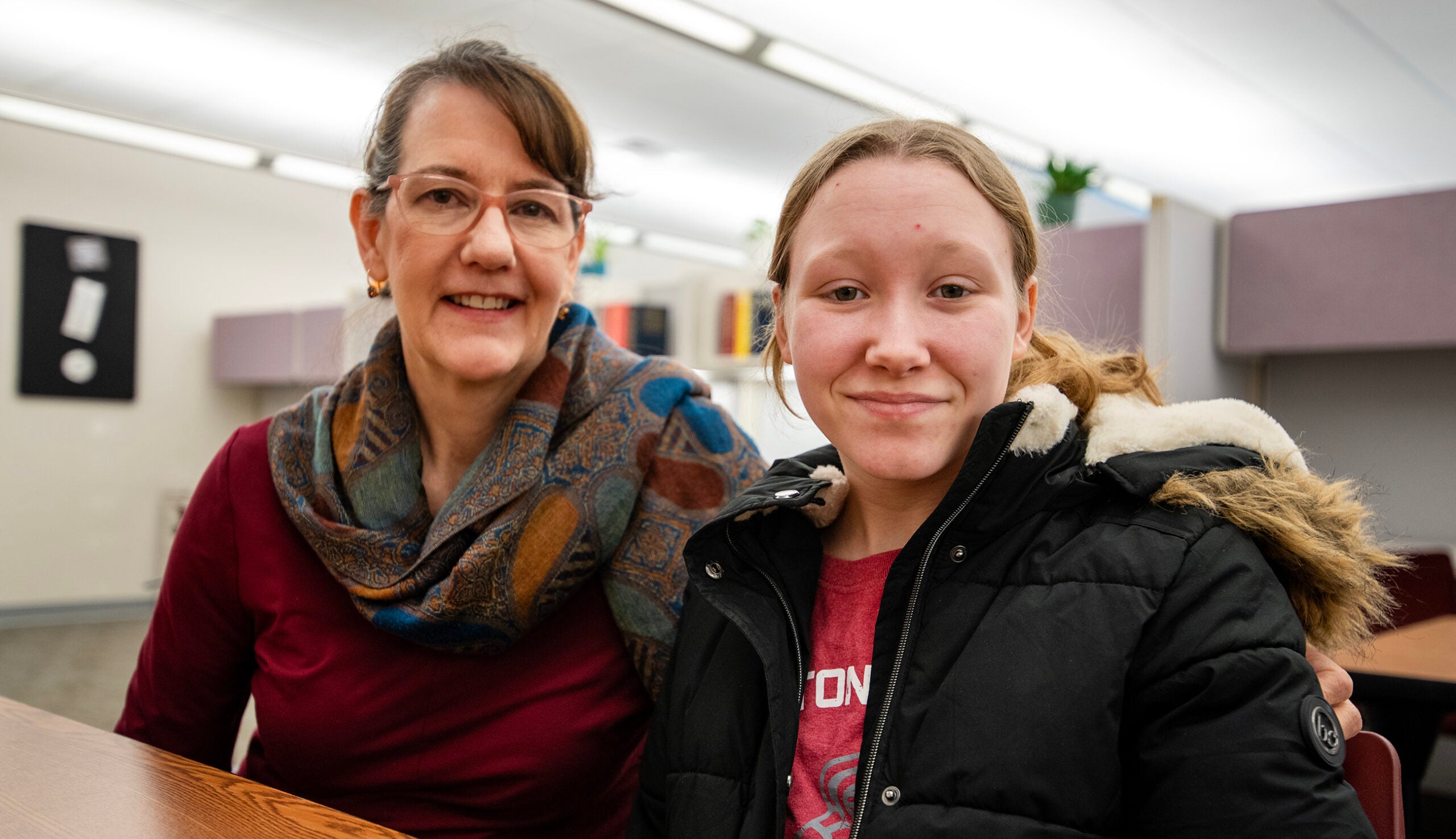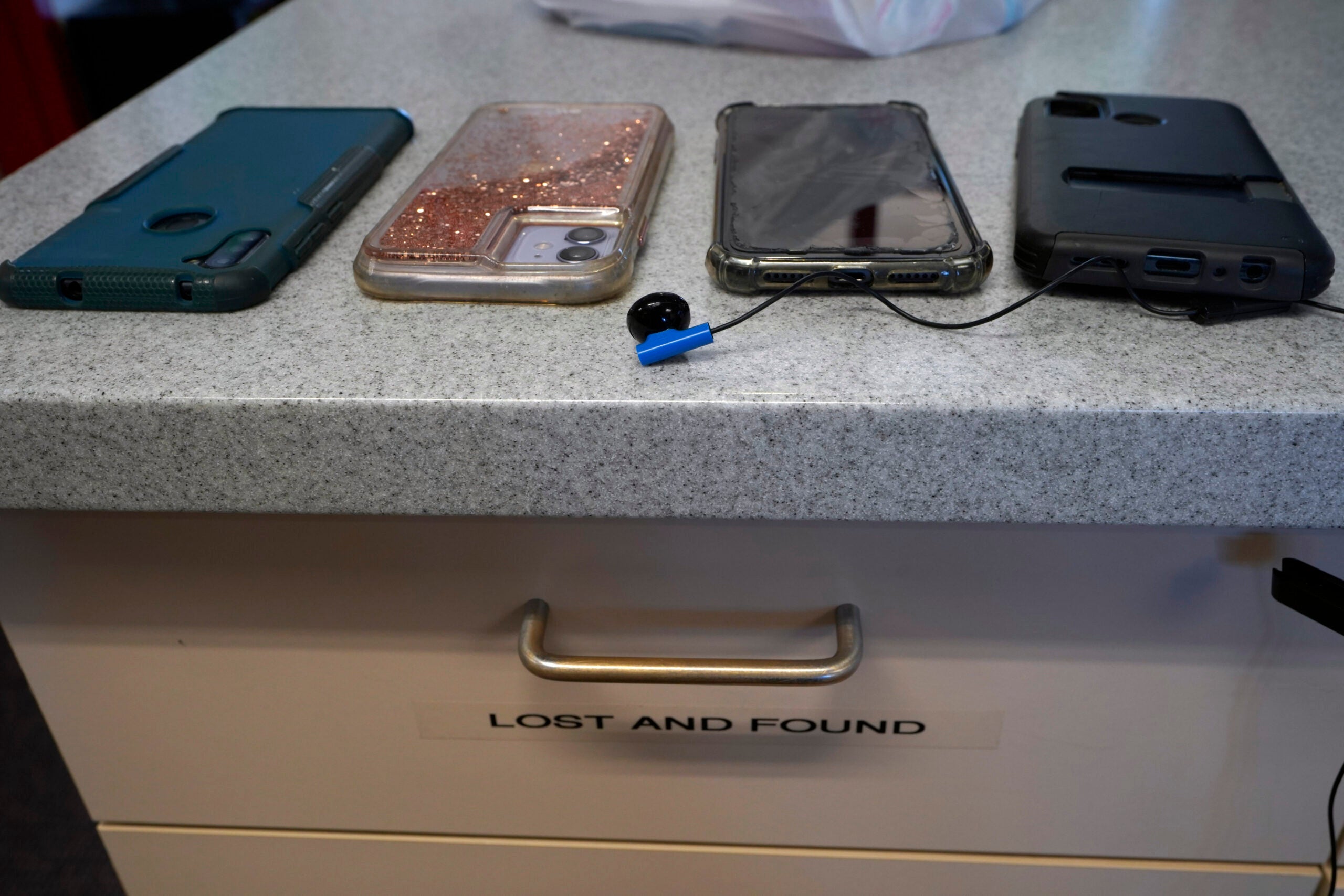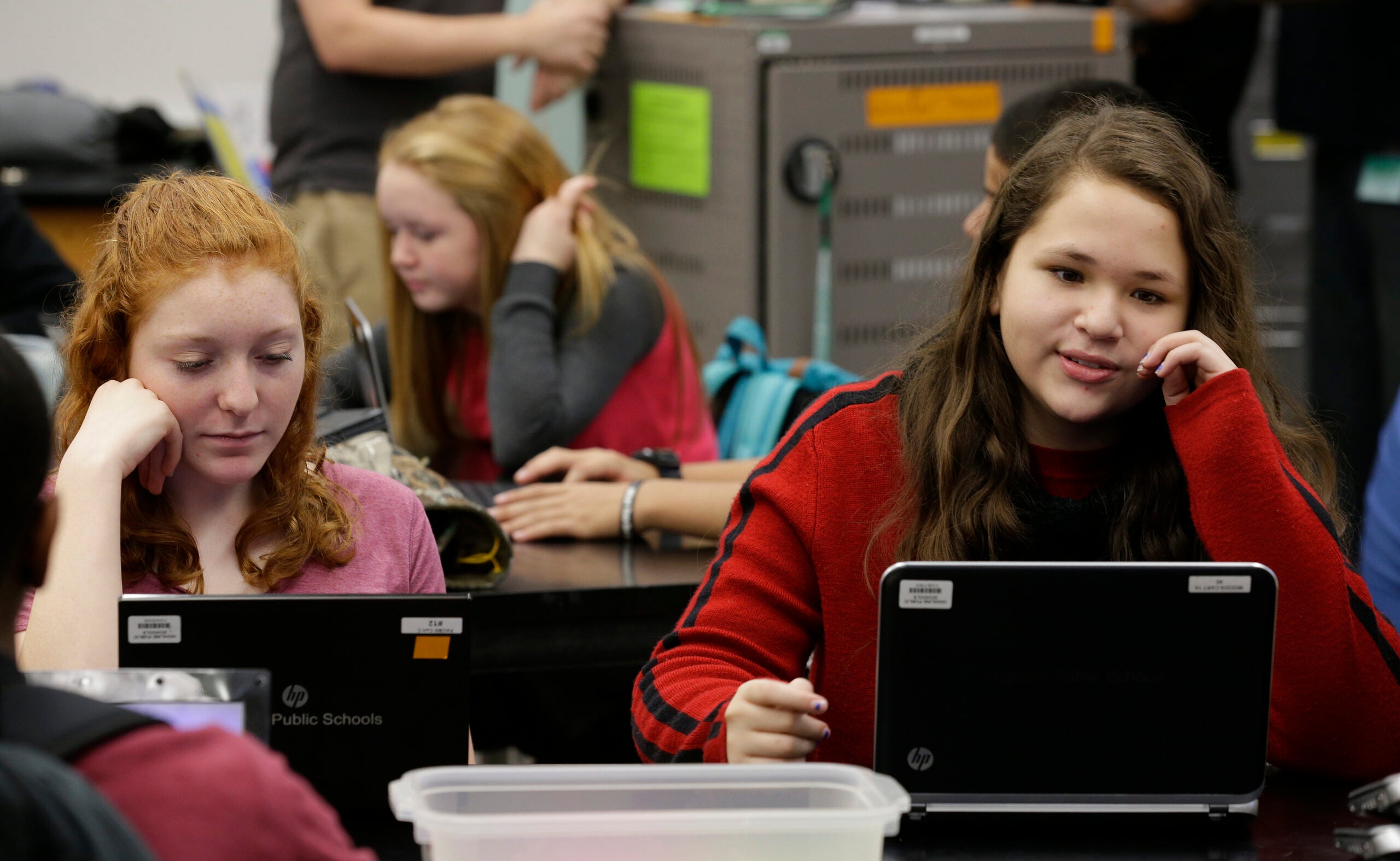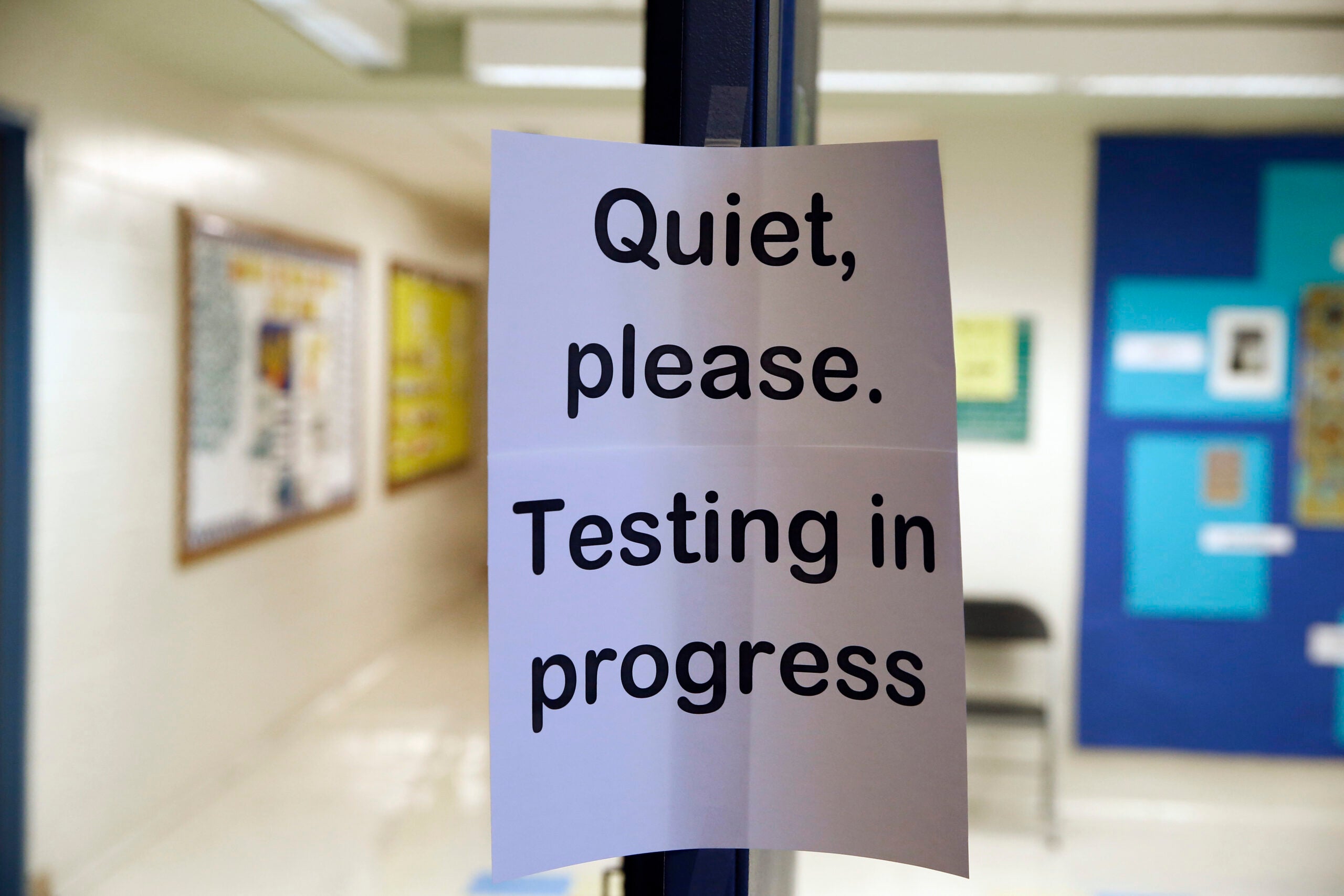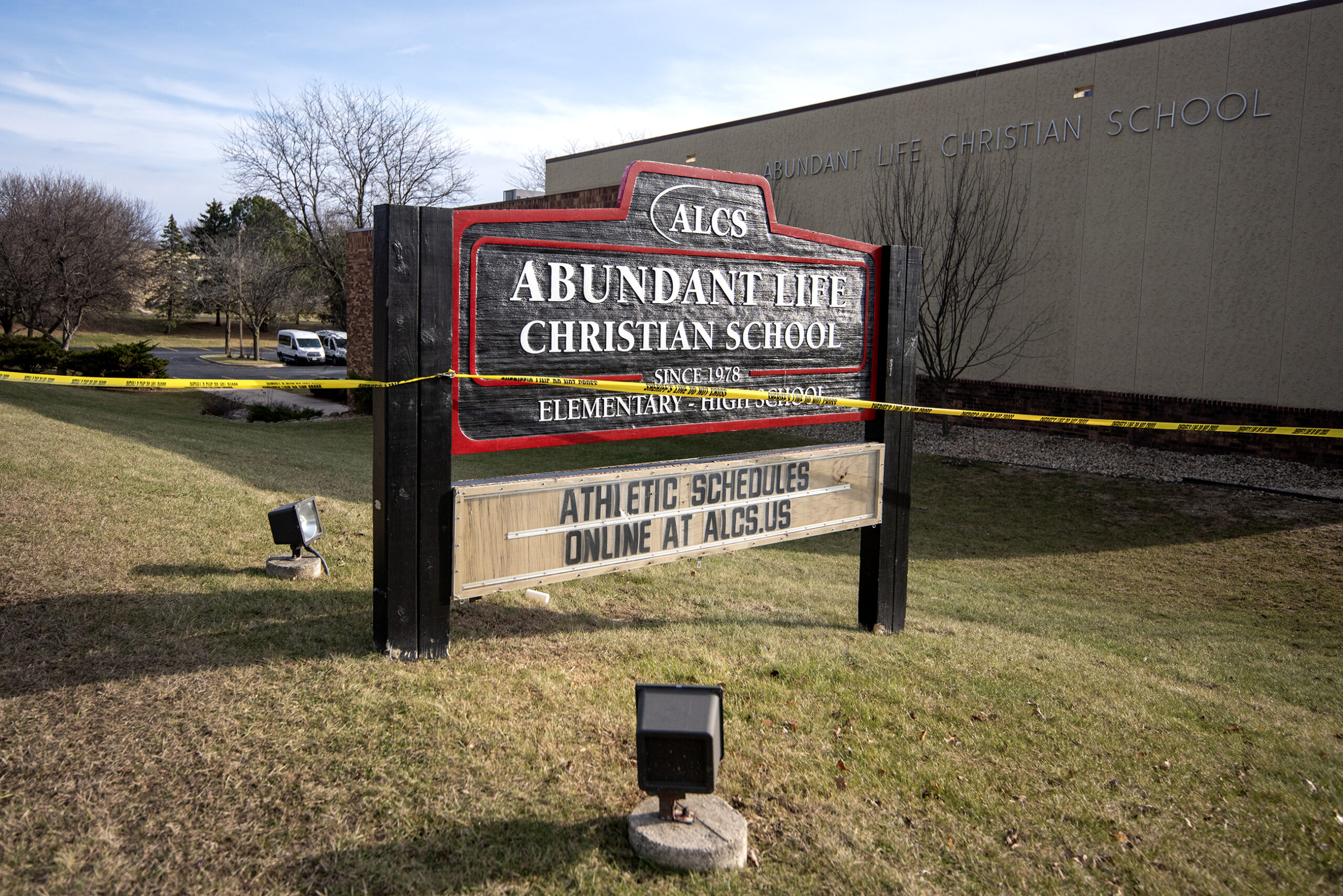Some Wisconsin teachers are raising the alarm about their school districts’ reopening plans with the start of the school year fast approaching.
Although most of the state’s largest districts are opting for a virtual start — including Milwaukee, Madison, Green Bay and Appleton, which just switched to all-virtual this week — many other districts are planning to bring students back into school buildings in September. Teachers in several districts said they worry officials aren’t taking the proper precautions or treating staff concerns seriously amid the ongoing COVID-19 pandemic.
That’s what drove about 25 Stevens Point teachers out to protest on Monday. Their district will bring 4K through sixth-grade students back in-person four days a week, and higher grades back two days a week, grouped into cohorts. The district surveyed parents about their preferences earlier this summer.
Stay informed on the latest news
Sign up for WPR’s email newsletter.
“I’ve had parents asking me, ‘What should I do? What option should I pick?’” said Schuyler Pietz, an elementary school music teacher and vice president of the local teachers’ association. “I’ve told them, as hard as it is for me to not see your child face to face this year, I’m going to miss them horribly, but I would rather know that they’re safe than have them in the classroom with me.”
The Stevens Point Area Education Association ran its own survey of teachers’ preferences for starting the school year and found that more than half wanted to stick with virtual learning. Nearly 25 percent said they preferred a hybrid method while about 17 percent were on board with face-to-face learning.
“None of us like e-learning. That wouldn’t be our first option for most teachers, but we feel like that’s the safest option for people right now until we can get this virus under control,” said Pietz.
The survey also revealed that about half the teachers who answered the survey would consider retiring or resigning rather than return to face-to-face learning. However, most didn’t think they could actually follow through because they couldn’t risk losing their income or health insurance. Pietz and Keith Olson, the SPAEA’s president, said they’d heard of two teachers retiring early or quitting so far because they didn’t want to risk returning to classrooms.
Ron Martin, president of the statewide Wisconsin Education Association Council, said it’s too early to tell how many teachers might move up their retirement plans or otherwise leave the field, but anecdotally, he has heard of several cases, and the union has seen an uptick in teachers inquiring about retiring.
“We don’t usually get people asking questions this early in the school year. Usually, we get that around February or March,” he said.
Teachers In Southeastern Wisconsin Critique Their Districts’ Plans
In the southeastern part of the state, teachers with WEAC’s region 7 took their grading pens to their districts’ reopening plans. They assessed 12 districts’ plans, including three of the state’s 10 largest, and gave “F” letter grades to half, all of which are planning to open in-person for the start of the school year.
“Right now, what I’m seeing in survey after survey that our teacher associations do of our members is that by wide margins, people don’t feel that it’s really safe to return in person, much as they would like to,” said Ted Kraig, executive director of WEAC’s southeastern region. “They’re afraid that students will get hurt, they’re afraid that schools could become super-spreading events where it just becomes a surge in the community that hurts a lot of people.”
The remaining six got passing grades: A letter grade of “B”, or “mostly safe,” for Milwaukee, South Milwaukee, West Allis and Racine, and a C, or “risky upon in-person return” for Kenosha and St. Francis.
Kraig said he wants school districts to learn from the spike in COVID-19 cases Wisconsin and other states saw as they started to lift stay-at-home orders.
“In May, when a lot of states rushed back to opening, doing things like opening bars and so on, we just thought we could ignore science and public health knowledge, and look where we are — we’re surging and we don’t have control of this virus,” he said. “The same thing can and will happen in schools if we’re not really paying attention to what experts are telling us, and putting safety as a very high priority.”
Although early studies seemed to show that children were at low risk for falling ill with COVID-19 and some countries didn’t see many cases when they reopened schools, more recent reports show that the disease can spread in schools, and put children and staff members at risk.
Ron Martin, WEAC’s statewide president, said he is worried about the toll a school-related COVID-19 death would take on students, teachers and the broader community. He recalled when he was in first grade at the Northwoods school district in Minong, and his physical education teacher died in a car crash. He said it was traumatic for him and his classmates — and that was without any connection between her death and the school.
“But then, to think, if I’m a first-grader and I could’ve been the one to bring COVID to my teacher, and they died during the school year, that would be so traumatic,” he said “To lose a teacher, or vice versa, for a teacher to lose a student. Oh my gosh, I can’t even imagine.”
That’s top of mind for Pietz, as well, who visits each classroom in her elementary school as a music teacher. She said she is worried that because she’ll have contact with the entire school, she could pick up the disease more easily, or spread it broadly before she’s even showing symptoms.
Until school districts can get a plan in place to ensure the safety of everyone in the school, and work as a community to bring down transmission to a safer level, Martin said they shouldn’t be bringing students and staff back into their buildings.
“If they’re not safe, and districts can’t answer the question, ‘Can I guarantee staff and student safety,’ they shouldn’t be opening,” he said.
Wisconsin Public Radio, © Copyright 2025, Board of Regents of the University of Wisconsin System and Wisconsin Educational Communications Board.
